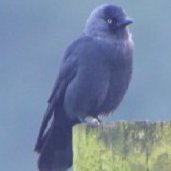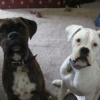Search the Community
Showing results for tags 'Jagdpanzer IV'.
-
Pz.Kpfw.IV/70(A) Mid (BT-028) Jagdpanzer IV 1:35 Border Model via Albion Alloys Designed as a replacement to the successful StuG III, the Jagdpanzer IV was instead built upon the more modern chassis of the Panzer IV as the nomenclature implies. It went into production despite objections that the StuG III was perfectly adequate for the job going forward, and diversion of resources away from standard Panzer IVs was wasteful. Due to shortages of the new L/70 gun, the initial production was fitted with the 7.5 cm Pak 39 L/48, which had a shorter barrel and was less powerful than the Pak 42 L/70 that was eventually fitted, and can be quickly differentiated by the lack of muzzle-brake on the longer gun, with under 800 short-barrels produced. There was an overlap in production between the two main guns, the last L/48 equipped vehicles leaving the factory at the end of 1944, the longer barrelled examples continuing until German industry ground to a halt in the spring of 1945. The type wasn’t without its foibles, and could shed rubber tyres due to the weight of the vehicle on the ground, which sometimes led to installation of all-steel rims, and as rubber was a scarce strategic material anyway, that had its advantages. The longer barrel also made travelling over rough ground problematic, as the increased overhang could result in the muzzle digging-in, thanks to the lack of turret and limited traverse preventing moving the gun around to clear obstacles. Another reason for removing the muzzle-brake was that in dry weather, the gun kicked up immense clouds of dust that could give away its position, negating the benefits of its relatively low silhouette. As the war situation deteriorated for the Nazis, there were efforts made to cease Panzer IV production in favour of the StuG III, as it was concluded that they had performed better at the crucial Kursk turning point of the Eastern Front campaign. This effort failed, although the Pz.IVs were only produced at one factory during the closing months of the war, with StuG IVs taking over some of the production capacity freed up by the shrinking Panzer IV workload. In typical fashion, instead of concentrating on one type and producing a large quantity that were simple to maintain, they manufactured three or four designs that were essentially carrying out the same task, all of which had their own training, parts, and maintenance requirements. Thankfully for the Allies, this worked in their favour and they had to face fewer tanks on the march toward Berlin. As an aside, my SO’s grandfather encountered a Jagdpanzer IV during WWII, and we have a photo of him and his colleagues sitting astride the barrel and superstructure, with a visible shell entry point between the sponson underside plate and engine bay side panel, which was probably the reason for its destruction or abandonment. It would make a great diorama one day if I ever get the time and skills together at the same time. The Kit This is an additive retool and new boxing of a recent kit from Border, and arrives in a substantial top-opening box with a painting of a winter camouflaged Jagdpanzer IV in the midst of a battlefield some time during winter, probably late ‘44 or early ’45 on the long road back to Berlin and eventual defeat. Inside are thirteen sprues, a crisply moulded lower hull and casemate with additional unused parts in grey styrene, a turned aluminium barrel, a large fret of Photo-Etch (PE), a tiny decal sheet containing just twelve decals, and a colour printed instruction booklet in A4 landscape format that includes decal profiles in the rear. Detail on the sprues is excellent, with some finely tooled moulding and judicious use of slide-moulding to achieve increased detail without raising the parts count unduly. There is also rolled steel armour texture moulded into the casemate in the form of a fine dimpled surface, while the highly visible Saukopf mantlet armour and a few other appropriate parts are moulded with a sand-cast texture. Construction begins with the lower hull, which is well-moulded with plenty of detail on all external surfaces, and includes the cooling vents on the sides of the engine compartment, simplifying the build a little. Suspension bump-stops and other components are added to the sides, and the rear bulkhead with idler axle mounts, towing eye on two mounting plates, making up sixteen sets of paired road wheels of two styles that slide onto the twin bogies, which the instructions tell you to make up in two handed sets of four for each on the left and right sides of the vehicle. Eight paired return rollers, two-part drive sprockets and three-part idler wheels are also made up and installed along with the two final drive housings at the front of the hull. The hull can now be righted to install the two glacis plate panels, the upper part having separate inspection hatches with armoured hinge covers and PE brackets, while the front panel is inserted clean. This leads us to the tracks, which are of the link-and-length variety, offering the modeller a simplified variation on independent links, whilst easing the task of obtaining the correct sag, particularly to the upper run, which has substantial sag moulded-in, which was a feature of this tank’s track system. Eight individual links are installed around the drive sprocket along with a short diagonal length then three more individual links, with a similar process carried out at the rear, but with one lower link transferred to fit around the idler wheel, and an extra link moulded into the diagonal section. Detail is excellent, with just a few small ejector-pin marks on the insides of the longer lengths that you can hide if you think they’ll be seen through the muck and grime of weathering. The fenders go on next, adding slide-moulded mudflaps to the ends, and short vertical fillets added at the front. A single headlight is fitted on the front of the left fender, with some miniscule return-springs attached to the sides of the front mudguards, adding PE baffles to the rear vents, although you might need to refer to the later steps that show them in situ, as it’s not immediately clear. What is clear is that a Notek convoy light is glued to the left rear fender behind the vents. Before the casemate can be built, the main gun breech must be made up, taking several steps and many parts to create a detailed depiction of the L/70 breech block, aiming mechanism and the protective frame to the rear. The casemate's frame is thickened with an additional layer to the inside front, fitting the gun-mount bulge to the breech, taking care to apply the glue sparingly, as this is the hollow in which the gun elevates and traverses on a peg that meshes with a hole in the bottom, although there is only around 15° of traverse left or right. It is installed from outside the hull, taking care with the glue again to prevent freezing the gun in place. The casemate rear wall is separate, fitted with a fume extraction fan and armoured mushroom cover, then the roof is dropped in and detailed with periscopes, hinges for the two main hatches, the pop-up hatch for the commander’s binocular sight, and the curved sliding hatch near the front. The binocular periscope and its mount are provided, allowing you to pose it deployed or omit it and leave the hatch down, adding a small handle to the top. During the process, an armoured cover for the gun sight and several small PE tie-down lugs are fixed carefully to the front and sides of the casemate. The pioneer tools are scattered across the remaining sides and deck space in the next steps, including barrel cleaning rods, spanners, the umbrella antenna on a curved mount with PE branches, jack, spade, track tools and a toolbox. The gun barrel is a single solid part that is found next to the 4mm shorter L/48 barrel that has a slide-moulded hollow muzzle, or you could use the turned aluminium alternative, seeing as they’ve been good enough to supply one. The keyed barrel should be inserted into the breech along with the slide-moulded ‘Saukopf’ mantlet armour. An A-frame travel lock is supplied in this boxing, fixing it to the front of the glacis on two brackets, then adding two more towing eyes with pegs to the lower glacis, and these were often connected to the bracket by a short chain to prevent losing them, so if you have some, it won’t look out of place. The engine deck is lowered into position complete with its newly installed tools, adding PE and styrene brackets, plus a pair of rods on the rear of the casemate. The twin exhausts are each made from two styrene parts, plus a PE top surface to the armoured support, fixed to the rear bulkhead offset to the right, dropping two stacked pairs of road wheels on rods over the left vents on the engine deck, plus another simple whip aerial on the back of the engine deck. Most Jagdpanzer IVs were fitted with schürzen down the sides that were attached loosely to the hull on brackets, and this is one of them, utilising comparatively light weight mesh panels that also gave the tankers a little sideways visibility, providing they kept them clean! You are provided with stub brackets that fix to boxes along the fenders and the sides of the casemate, then the rails are fitted with brackets and stops along the length of each one. Once the glue is fully cured on these, four V-shaped brackets of varying shapes are fitted to the sides of the tank, then the rails are glued along them, and here it would be wise of let the glue cure before attempting this step and the next one. You are instructed to glue the individual panels of the schürzen in position, matching the double dash marks with the ends of the stub brackets that were fitted initially. It could be worth experimenting with gluing the stub brackets to the rear of the schürzen panels before you attach them to the hull, as it might ease the task, but it also might complicate your day, so test fit with just one before proceeding. Remember that these panels were intended to pre-detonate incoming shaped-charge rounds to disperse their effect, and weren’t armoured in any sense of the word, so were prone to damage from incoming rounds of most calibres, as well as damage from collisions with other vehicles and the surrounding countryside, so were often bent, mangled and even had entire panels missing at times. That gives you liberty to have a little fun crafting a history into those sheets of mesh and their metal frames, bending, breaking, and losing panels as you see fit. Annealing the brass before going to work will make the metal malleable and easier to work with, which can be done with a lighter or candle flame, applying heat until the metal is discoloured, then letting it cool naturally to retain the softness. Candle flames generally contain soot as a by-product of combustion, so if you have a lighter to hand, it’s the cleaner option. If I’m teaching my grandmother to suck eggs however, I apologise. As an aside, the sprues include a few additional items in the shape of a bucket with PE handle, a pair of jerry cans, and a pair of road wheel hubs without rubber tyres. Markings There are three decal options on the small sheet, with a variation of ambush, winter distemper and late war camouflages, each with pair of balkenkreuz and their vehicle codes on the sides of the casemate. From the box you can build one of the following, about which we’re told nothing other than what colours to paint them: The sheet contains twelve decals, the codes printed in black and white, with acceptable registration, colour density and sharpness, plus a matt carrier film cut relatively close to the edges of the printing. There is a tiny offset with the white that shows in the vertical elements of the crosses, but this could be fixed quickly by trimming the larger side with a sharp blade before application. Conclusion A fine rendition of a mid-production Jagdpanzer IV sporting the longer L/70 barrel, with plenty of detail on the exterior, and the breech should be visible through an open hatch, giving you options despite it being officially an exterior-only kit. The later mesh schürzen gives the model a more realistic look, and can be banged up to depict a well-used example, or one driven by a klutz. Highly recommended. Available in the UK in all good model shops. Review sample courtesy of
-
Hello all I'm going to do my first armour WiP here with a Jagdpanzer I recently started. My modelling budget is very restricted, which means I am usually stuck building 'basic' 70s armour kits. So I was very excited to spot this in the fantastic sale box as Halifax Modeller's World. Let's just say it was a real bargain! I believe it is a re-box of the Dragon kit, from what I've seen on ScaleMates. As the box advertises, this is an 'Early Production' Jagdpanzer IV L 48. The kit seems really good to me. It is correct in most of its details for the specified variant. However, I believe all Jagdpanzer IVs produced from the first in January 1944 to September 1944 were coated in zimmerit, which this kit is missing. Creating zimmerit will be one of the tasks for me to make this an accurate replica, then. The kit is also missing side skirts, although many Jagdpanzer IVs didn't have these attached, or the skirts fell off. The kit also has some intimidating tracks... I know it'll get good 'sagging' but I'm dreading the monotonous day I build these! I've done some research into my vehicle. I'm one of those modellers who likes to build a specific vehicle from a historic photo. I enjoy the research and 'detective work' involved in working out which variant my kit can build and what details I need. To me, replicating a specific historic vehicle adds an extra challenge into the mix and gives value to the finished product. I've got nothing against any other type of modelling, though! It's always hard to interpret what and where a historical photo depicts. I have concluded that this vehicle was produced in May 1944, and is photographed in Vaiges, Normandy, where I believe it broke down. I think it was part of the 12th SS Panzer Division's Panzer Jäger Abteilung 17. If you are interested in my reasoning, I've included it in a spoiler below. I'd appreciate any comments because I've made plenty of assumptions and would love better evidence! Photograph 1 Photograph 2 Photograph 3 Photograph 4
-
Hello All, The latest completions - Nashorn, Panther G and a kitbashed Jagdpanzer IV L/70 all 1/144 scale from DML's armour series. Finished in Gunze Acrylics and MiG acrylics. Weathering in oils, inks, pigments and Tamiyas weathering compacts. Thanks for looking. Thanks for looking, Ian
-
Hello All, Dragon Models Panzer Korps Series Early Hetzer and Jagdpanzer IV A-0 in 1/144 scale. Good detail for the size but the rubber tracks are abysmal.... Happy Modelling all, Hope all goes well on the modelling front in 2017! Ian
- 2 replies
-
- 8
-

-
- hetzer
- Jagdpanzer IV
-
(and 1 more)
Tagged with:
-
Hello All, Dragon's Jagdpanzer IV(L70) Gunze paints, oils, artists acrylics, games workshop paints and inks and MiG Pigments + a homemade brew of filters from a 30year old + collection of Humbrol enamels. This is a first go at serious mud making for the running gear. Happy modelling all - some really nice work on display Ian
- 10 replies
-
- 15
-

-
A couple of models for my Canadian cousin Evan, he was supposed to have taken these with him when he left four years ago, but they got broken while his dad was packing.....Anyhow, he's back and still well into his tanks, so I've repainted them for him: Italeri 1/72 Jagdpanzer IV (This model's been a test-bed for everything from freehand airbrushing to zimmerit by hot-screwdriver! ). Unidentified Diecast 1/72 Ferdinand (Don't blame me for the build on this one.....The guy who fitted the wheels must have been drunk! ).
- 6 replies
-
- 3
-

-
- Jagdpanzer IV
- Ferdinand
-
(and 1 more)
Tagged with:





